 High spending Americans splashed out over 100 billion dollars buying stuff on the web last year, with the popularity of Internet shopping set to keep on soaring.
High spending Americans splashed out over 100 billion dollars buying stuff on the web last year, with the popularity of Internet shopping set to keep on soaring.
Research firm comScore Networks calculated that high-clicking consumers ratcheted up 102.1 billion dollars via online retail spending (excluding travel) in 2006 -representing a hefty increase of 24 percent over 2005.
The build up to Christmas proved to be a bumper season for selling, with 24.6 billion dollars flying into online cash tills during November and December, up 26 percent from 2005’s total.
“E-commerce is becoming more mainstream,” said Jeffrey Grau, senior analyst at the research firm eMarketer.
“A larger segment of the population is buying online, and people are buying more things than they have in the past,” he added.

Investment firm Cowen & Co. put the total sales figure for 2006 slightly higher at 108 billion dollars, predicting that it will hit 225 billion by 2011.
In their report, the company estimated that US e-commerce sales will grow 20 percent in 2007, citing growing broadband adoption, lower online prices and added convenience as the driving forces.
According to their figures, e-commerce would end up grabbing a hefty 4.7 percent chunk of total US retail sales in five years time, a mighty leap up from the current figure of 2.7 percent.
Jim Friedland and David Geisler, analysts at Cowen, reckon online sales will eventually pass 10 percent of total US retail spending, fuelled by a consumer shift to more music and film downloads, adding, “We expect a dramatic long-term shift in the media category from physical in-store purchases to Internet downloads.”
[Via Yahoo]
 TiVo has been shipping their PVRs with an Ethernet port since their series 2 model, promising content delivered over broadband.
TiVo has been shipping their PVRs with an Ethernet port since their series 2 model, promising content delivered over broadband.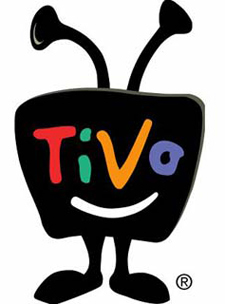 TiVoToGo for the Macintosh
TiVoToGo for the Macintosh Employing a carousel-style interface, the application comes with Yahoo! Go ‘widgets’ offering e-mail, local information and maps, news, sports, finance, entertainment, weather, photo sharing and search functionality.
Employing a carousel-style interface, the application comes with Yahoo! Go ‘widgets’ offering e-mail, local information and maps, news, sports, finance, entertainment, weather, photo sharing and search functionality. Yahoo! Go also makes it easy to get to other websites, without the need to faff about with al that fiddly http://www stuff – just type in the name of a website and you’ll be taken to the site.
Yahoo! Go also makes it easy to get to other websites, without the need to faff about with al that fiddly http://www stuff – just type in the name of a website and you’ll be taken to the site.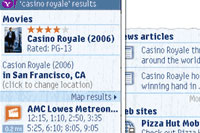 News, Sports, Entertainment, Weather and Finance info can accessed via various widgets, with the ability to add new content via customised RSS feeds.
News, Sports, Entertainment, Weather and Finance info can accessed via various widgets, with the ability to add new content via customised RSS feeds.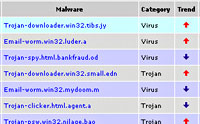 In ye olde days, spammers just used to send out bucket loads of text-based emails, but these were proving progressively less effective against smarter anti-spam software employing tricks such as dictionary-based content filters.
In ye olde days, spammers just used to send out bucket loads of text-based emails, but these were proving progressively less effective against smarter anti-spam software employing tricks such as dictionary-based content filters.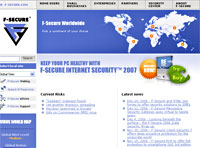 All spam is annoying, but with its bundled images, this new technique adds a double whammy of gobbling up more precious bandwidth to deliver its spam-tastic cargo.
All spam is annoying, but with its bundled images, this new technique adds a double whammy of gobbling up more precious bandwidth to deliver its spam-tastic cargo. Christmas is certainly the time to be purloining down Lagos way, with the Digital Lifestyle office receiving an upsurge in deceased relative scams, phishing emails and the usual “YOU HAVE WON 2,575 TRILLION DOLLARS” nonsense.
Christmas is certainly the time to be purloining down Lagos way, with the Digital Lifestyle office receiving an upsurge in deceased relative scams, phishing emails and the usual “YOU HAVE WON 2,575 TRILLION DOLLARS” nonsense. First off, a rummage through the headers revealed that the email was a better-than-average forgery, with the obfuscated email originating not from the company themselves, but from an
First off, a rummage through the headers revealed that the email was a better-than-average forgery, with the obfuscated email originating not from the company themselves, but from an  Naturally, we reported our experience to Amazon, but were unable to resist replying to his email thus:
Naturally, we reported our experience to Amazon, but were unable to resist replying to his email thus: Santa’s sleigh bells are in danger of being drowned out by the ringing of virtual cash tills, with a new report revealing that UK Internet retail sales hit £3 billion for the first time during November.
Santa’s sleigh bells are in danger of being drowned out by the ringing of virtual cash tills, with a new report revealing that UK Internet retail sales hit £3 billion for the first time during November. Looking back to 2004 reveals just how dramatic the increase of online sales has become, with the year only averaging a comparatively feeble growth rate of just £16 million per month.
Looking back to 2004 reveals just how dramatic the increase of online sales has become, with the year only averaging a comparatively feeble growth rate of just £16 million per month.
 What’s the fall out?
What’s the fall out? It’s being predicted that today will be the biggest Internet-based shopping day of the year in the UK. The Interactive Media in Retail Group (IMRG) research points to a massive £180m being spent just on this day, more than double the £82 million average for 2006.
It’s being predicted that today will be the biggest Internet-based shopping day of the year in the UK. The Interactive Media in Retail Group (IMRG) research points to a massive £180m being spent just on this day, more than double the £82 million average for 2006.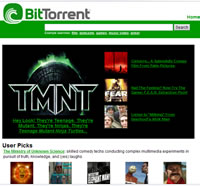 The one-time force for evil (in the eyes of the film industry), Bit Torrent has had a good couple of days, first they sign a distribution deal with some of the major film and TV companies, then today they announce that they’ve closed another funding round.
The one-time force for evil (in the eyes of the film industry), Bit Torrent has had a good couple of days, first they sign a distribution deal with some of the major film and TV companies, then today they announce that they’ve closed another funding round.
 We spent a fair bit of time watching online advertising, as the income for Digital-Lifestyles comes in solely from it.
We spent a fair bit of time watching online advertising, as the income for Digital-Lifestyles comes in solely from it.